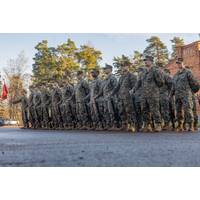
Struggles to Secure Baltic Sea Dominates NATO's 'Freezing Winds '24'
; said Commander Arlo Abrahamson, a spokesperson for NATO's Allied Maritime Command.Yet the ease with which a ship's anchor can slice through a cable, coupled with the often-treacherous sea conditions, makes actual prevention of such attacks almost impossible.On day three of the exercise, German Navy commander Beata Król tried to launch an underwater drone from her de-mining vessel, the Weilheim, to inspect the seabed as a winter storm raged. After a 30-minute delay in launching it, the drone had frozen and could not operate."The batteries got cold," she said, shrugging, as
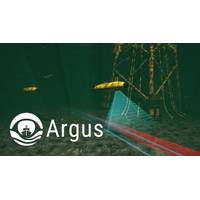
Underwater Infrastructure Big Data Project Secures €2.4 Million Grant
in collaboration with key partners including the GEOMAR Helmholtz Centre for Ocean Research Kiel and Subsea Europe Services GmbH. The project is further strengthened by the involvement of other stakeholders, including the Federal Maritime and Hydrographic Agency (BSH), the Federal Police and the German Navy, who will contribute their expertise in maritime operations, law enforcement and hydrographic data to ensure the project's success
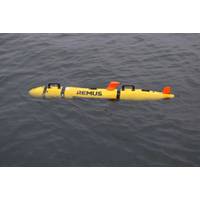
HII Delivers REMUS 100 to the German Navy
Huntington Ingalls Industries (NYSE: HII) delivereda new REMUS 100 Unmanned Underwater Vehicles (UUVs) to the German Navy. The vehicles will be used to expand the German Navy’s current fleet of REMUS 100 UUVs used for mine countermeasure (MCM) operations.The new REMUS 100 UUVs have advanced core electronics and endurance of up to 12 hours. Built on the REMUS Technology Platform, the vehicles are open architecture and have enhanced modularity.“We value our ongoing partnership with the German Navy and are proud to help enhance their national security capabilities,” said Duane Fotheringha
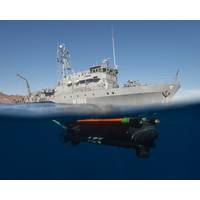
Tech Upgrade for German Minehunting Vessels
ATLAS ELEKTRONIK said it has received an order from the Federal Office of Bundeswehr Equipment, Information Technology and In-Service Support (BAAINBw) for the modernization of three minehunting vessels of the Frankenthal class (Type 332) in service with the German Navy. The objective of this project, which bears the designation MJ 332 CL, is to equip the three boats with the Integrated Mine Counter Measure System (IMCMS) and the mine disposal vehicle SeaFox of ATLAS ELEKTRONIK. On top of that, the vessels will be given the capability for controlling the “Seehund” ROV, which until
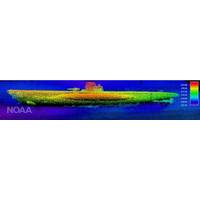
Researchers to Visit ‘Battle of the Atlantic’ Wreckage
.S. National Oceanic and Atmospheric Administration (NOAA) and its partners are set to visit what remains of two ships—a German U-boat and a Nicaraguan freighter – which sank off Cape Hatteras during World War II’s “Battle of the Atlantic,” which pitted the U-boats of the German navy against combined Canadian, British, and American forces defending Allied merchant ships. By July 1942, the United States had been in World War II for less than a year, but the fight was coming to the nation’s shores. On July 15, 1942, off Cape Hatteras, N.C., the German U-boatU-576
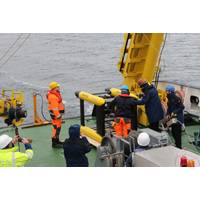
New ROTV System to Aid German Naval Research
WehrTechnische Dienststelle (WTD 71), developer of new underwater technologies for the German navy, has acquired a MacArtney FOCUS 2 ROTV system representing a stable and flexible instrumentation platform as the basic tool for its development efforts. With the purpose of testing SAS sonar technologies for mine detection, a full scale on-site demo of a Raytheon ProSAS installed on a FOCUS 2 ROTV system was organized for WTD 71. The advantages of the FOCUS 2 ROTV as a flexible instrumentation platform were recognized by the researchers at WTD 71, who instantly came up with new ideas for
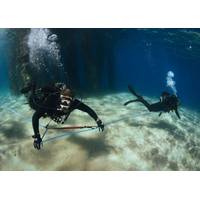
Divers Highlight Interoperability in Finding, Neutralizing Mines
is focused on maritime security – from mine countermeasures, maritime infrastructure protection and maritime security operations – in support of civilian shipping and freedom of navigation. "IMCMEX brings together a different variety of coalition partners," said German navy Cmdr. Mario Fink, from Kiel, Germany, who is commanding the IMCMEX task force in Kuwait. "Working together to know the ability of the different nations and to be familiar with circumstances of this very important area is an important goal of IMCMEX." Vice Adm. Kevin Donegan
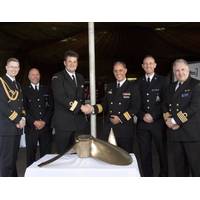
WWI U-Boat Propeller Returned to German Navy
A brass propeller from the first U-Boat to be sunk a century ago has been given back to the country it belongs to, the U.K. Maritime and Coastguard Agency (MCA) reported. The propeller from the German World War I submarine U-8 was handed over by the MCA to members of the current Navy during a handover ceremony on the German Naval vessel Karlsruhe in the Portsmouth Naval Base. The propeller, recovered along with other historical items following a number of seizures of illegally recovered dive artifacts in the Kent area in 2014, came into the care of the U.K.’s Receiver of Wreck
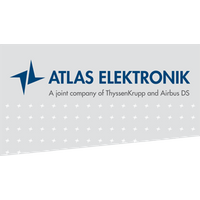
Atlas Elektronik to Launch Lithium Iron Phosphate
constraints. This generates major savings in life cycle cost of the torpedo as well as the submarine system. Safety is paramount in the demanding technological environment of the submarine. ATLAS ELEKTRONIK and ALSE have succeeded in passing all tests based on the demanding safety standards of the German Navy needed to achieve certification and clearance for use on submarines of its new Lithium Iron Phosphate rechargeable battery. This was achieved by a deliberate choice for the safest Lithium Ion type battery chemistry available, Lithium Iron Phosphate, and a unique dedicated battery cell design by

 February 2025
February 2025





